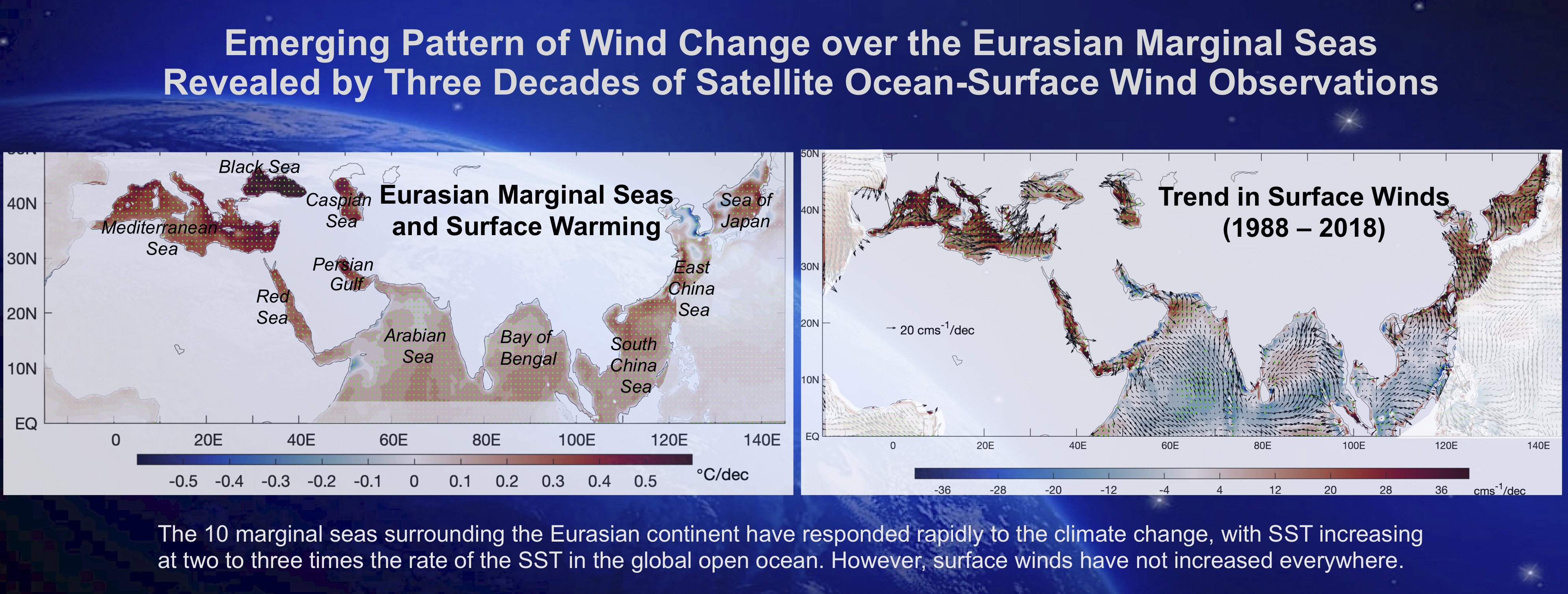Have the surface winds over the Eurasian marginal seas increased under the regional warming?

The marginal seas are partially enclosed bodies of water along continental margins, and they are often adjacent to or widely open to the open ocean at the surface. In the era of global warming, the marginal seas respond more rapidly to the evolving climate changes than the open ocean owing to their small sizes and the small volume-to-surface-area ratio,
Our recent study finds that during the recent decades (1988–2018), surface warming has occurred in all seas at a rate more pronounced in the South European marginal seas (0.4–0.6 °C per decade) than in the monsoon-influenced North Indian and East Asian marginal seas (0.1–0.2 °C per decade). However, surface winds have not strengthened everywhere. On a basin average, winds have increased over the marginal seas in the subtropical/mid-latitudes, with the rate of increase ranging from 11 to 24 cms−1 per decade. These upward trends reflect primarily the accelerated changes in the 1990s and have largely flattened since 2000. Winds have slightly weakened or remained little changed over the marginal seas in the tropical monsoonal region. Winds over the Red Sea and the Persian Gulf underwent an abrupt shift in the late 1990s that resulted in an elevation of local wind speeds. The varying relationships between wind and SST changes suggest that different marginal seas have responded differently to environmental warming and further studies are needed to gain an improved understanding of climate change on a regional scale.